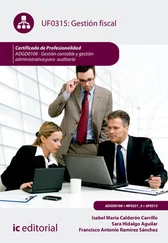1 ...6 7 8 10 11 12 ...18 In a technical system, the only value considered is the one obtained by measuring the ratio between what is produced and what is consumed. In an organism, the decisive value is indicated by the degree of present satisfaction felt by participants. In an institution, the ultimate value is the degree of future satisfaction of the people being organized. For an institution, the present satisfaction is a necessary operating condition (if actual motivations are not satisfied beyond a certain minimum, there will be no people with sufficient motivation to belong to the organization), but it is not the final goal of its operations.
For example, a company seeking to develop institutional relationships with its employees does not confine itself to providing a good salary and a task that is well designed from the point of view of the employee's capacities. It will also seek to challenge its employees with tasks that may help them to learn, to develop their potential, even though performing those tasks may be difficult and demand particular effort. Such a company could be helping its employees to grow and develop but, all other factors being equal, it would be more difficult to work there than for another company which did not assume this responsibility. Therefore, the latter company would satisfy actual motivations better than the former, but not potential motivations.
Since the satisfaction of actual motivations is what directly induces people to cooperate with an organization, this “greater difficulty” referred to above might require such a degree of sacrifice that the lack of satisfaction of actual motivations might also dissuade people from joining the organization in the first place. For this reason we say that a certain minimum actual motivation is necessary for the organization to operate at all. Without achieving this minimum, the institution's good intentions could not be put into practice, since what it offers as a starting point would be “too difficult” to be acceptable for potential participants.
In short, an institution's primary objective is the future satisfaction of its members. The concrete values embodied by an institution are precisely those which, once accepted by the person, help him in his personal development. These values mold the organization's entire modus operandi to such an extent that any action contrary to them is rejected, regardless of whether it would be acceptable at a particular time in the participative or negotiation processes.
Codes of ethics, basic personnel policies, etc., tend to configure institutional values that enable the organization members to identify with what the organization intends to achieve. In general terms, it can be said that, whether explicitly acknowledged or not, every human organization has values. These values are determined by the way each organization treats people, which in turn implies:
a) A conception of human beings and the processes whereby they improve.
b) A conception of the mission the organization sets for itself regarding its role in these improvement processes.
The influence of these values appears throughout the organization's life—the real question is what it does, not what it says—and that behavior is what leads its members to identify with, or grow alienated from, the organization.
The purpose definition, communication and motivation processes in an institution must all be permeated by institutional values. The purpose of this book is to analyze these processes inorder to be able to formulate practical guidelines consistent with an institutional view of business organizations.
The processes are different from those of an organism; whereas in the organism it is possible to design participation, negotiation and communication mechanisms that are sufficient to implement the processes, in an institution the mechanisms are no more than a part, and not even the most important part, of what must be done to implement the processes properly.
In order to find the point of divergence between the two types of organization, one need only observe that while these mechanisms can guarantee the present acceptability of coordinated actions, they cannot guarantee their consistency with the organization's values, since these values, if they are correct, attempt to generate future acceptability, that is, the a posteriori recognition that it was worthwhile to sacrifice, for example, the implementation of easier action plans in order to preserve the effective validity of the organization's values.
Application of models to real-life situations
An institution contains both an organism and a technical system. An organism also includes a technical system but can only represent an institution if it is assumed that the satisfaction of actual motivations (what an individual wants at a particular time) is exactly the same as the satisfaction of real needs (what individuals would want were they able to assess the reality correctly).
It is true that in many cases it may be correct—or relatively safe—to simplify an institution by viewing it simply as an organism; however, this will not be the case in other situations. It all depends on the degree of maturity of the participants of the institution, that is, their ability to avoid mistakes when satisfying their actual motivations. Many of the analyses
discussed later in this book will deal with these issues.
If on many occasions an organism cannot represent an institution (being an inappropriate simplification, as we have just said), a technical system is also severely limited in its ability to represent an organism (and all the more, to represent an institution). The limitations arise from the fact that in the technical system not even people's motives are included. The only variable taken into consideration is the coordination of actions in order to obtain products (or services).
A technical system only represents an exchange of objects, efforts, actions—in other words, things. It could only represent an organism if there were no difference between the achievement of the objects that the individual obtains from the organization and the satisfaction of the motives that induce him to cooperate with it.
True, in some cases this difference is slight, and it can be assumed with little danger of error that a technical system represents a human organization. In most cases, however, this is not true, particularly when it is intended that the organization have a continuing existence and that its participants feel moved to cooperate in order to satisfy stable needs and motives that go beyond the superficial. The less superficial the motive, the more difficult it is to relate the satisfaction of this motive to the achievement of a specific goal. Consider, for example, a person who begins working at a particular salary which seems to him adequate and sufficiently rewarding for the effort demanded in return. His underlying motives could be described by such vague explanations as “to earn a living,” “to learn a trade,” “to practice a profession,” etc. However, it is likely that as he experiences the true nature of his work and receives his salary, he will find that the satisfaction derived from these motives differs considerably from what he had expected. Whether this difference is positive or negative is irrelevant for the purposes of our present discussion.
On several occasions we have used the word dangerous when referring to the use of an inadequate model to represent an organization. For example, we have talked of the danger of using a model of an organism to describe an institution, and of using a technical system as a description of an organism (and all the more of an institution). What does this danger consist of? What risks do we run with these substitutions?
Of course, on a purely intellectual plane, the only risk we run is that of failing to understand what is going on in the organization being studied. There would be basic aspects of the purpose definition, communication and motivation processes that we would not understand at all because the lower order of the partial model fails to take them into account.
Читать дальше












